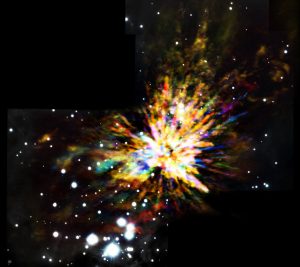Orbits of objects in our solar system, showing the current location of the planetary body ‘DeeDee’.


Size of DeeDee
Size comparisons of objects in our solar system, including the recently discovered planetary body ‘DeeDee.’

ALMA’s Millimeter Image of DeeDee
ALMA image of the faint millimeter-wavelength “glow” from the planetary body 2014 UZ224, more informally known as DeeDee. At three times the distance of Pluto from the Sun, DeeDee is the second most distant known TNO with a confirmed orbit in our solar system.

ALMA Investigates ‘DeeDee,’ a Distant, Dim Member of Our Solar System
Artist concept of the planetary body 2014 UZ224, more informally known as DeeDee. ALMA was able to observe the faint millimeter-wavelength “glow” emitted by the object, confirming it is roughly 635 kilometers across. At this size, DeeDee should have enough mass to be spherical, the criterion necessary for astronomers to consider it a dwarf planet, though it has yet to receive that official designation.

ALMA Captures Explosive Star Birth
Composite image of the OMC-1 cloud in Orion showing the sometimes explosive nature of star birth, when several young stars were ejected from the region. The colors in the ALMA data represent the relative Doppler shifting of the millimeter-wavelength light emitted by carbon monoxide gas. The ALMA image is combined with a near infrared image from the Gemini South telescope showing shock waves produced by the explosion.

Flaming Fornax Galaxy
Radio waves are invisible to our eyes, therefore, they do not arrive in any “color” that we’ve ever known. When we take our data and plot it, our artists can assign any color they please to the results. In this image of the famous Fornax radio galaxy, our artist tried a flaming orange coloring for the enormous lobes of gas this galaxy’s black hole sprays out.





